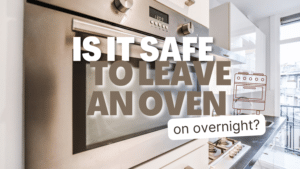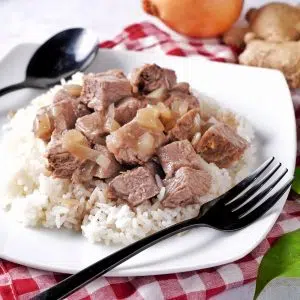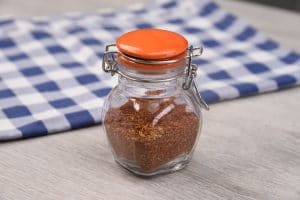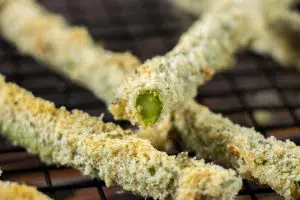Can You Use An Oven After Glass Breaks?
Important Note: When you buy through our links, we may earn a commission. As an Amazon Associate we earn from qualifying purchases. Content, pricing, offers and availability are subject to change at any time - more info.
Key Takeaways
- If a single pane of glass has broken, either the front, back, or inner, but not the entire window assembly, then your oven is probably safe to use until a replacement is located.
- Although a very rare occurrence, if oven glass is going to break, as tempered glass, it will explode and shatter into countless tiny blunt fragments and glass powder. Once all the glass has been cleaned up, most damaged ovens are still safe to use on a temporary basis.
- Inspect the door of the oven carefully. If it seals and there’s no sign of warping, but the glass is broken, then you’ll lose some heat, translating to unpredictable grilling, roasting, and baking, but the oven is still safe to use. Shoppers will be able to find a replacement glass window for most ovens with a door that’s still in good condition. Continued use of the oven, however, increases the risk of the other panes breaking so get hold of a replacement or fix quickly.
- In most cases, oven glass breaks due to an underlying crack, impurity or fracture that formed a long time before the explosion or cracking of glass itself. For most people, this is because of bumping the oven or oven glass pane hard enough with a utensil, oven dish, or other kitchen equipment while it’s hot enough to be damaged.
- Unless your oven is extremely old, query the manufacturer about your oven’s broken glass and see what policies are in place. You may be lucky enough to have your oven fixed for free if a manufacturing or glass fitment fault is found.
- Key Takeaways
- The Risks Of Using An Oven With Broken Glass
- What Oven Glass Is Made Of
- What Causes Oven Glass To Break
- What To Do When Oven Glass Breaks
- Frequently Asked Questions – Broken Oven Glass
Whether or not one can use an oven after the glass breaks all depends on how broken the glass is and the general condition of the oven. Suppose the oven still seals and only one or two sheets of glass are broken. In that case, there’s a very good chance you can continue using it temporarily, but this doesn’t mean that it’s totally safe. We’ve got everything that you need to know about broken oven glass, assessing the damage, and using an oven with a broken glass window coming up.
The Risks Of Using An Oven With Broken Glass
An oven with a broken glass window can, in most cases, still be used with relative safety. Those who do decide to continue using their unit while waiting to buy a replacement or get it repaired need to be aware of just how much more heat the oven will be putting out. The lack of adequate insulation will stress the remaining tempered glass panes, which can also cause them to break suddenly. Additionally, the escaping heat can warp the knobs/dials. Use a broken oven for too long, and the door itself without the glass in place will warp, and at this point, the entire appliance will need replacing. Finally, don’t use a damaged oven that’s exuding dangerous levels of heat if there are pets or children in the vicinity that can end up hurt from either touching the fiery surface itself or the potential glass explosion that may occur if the remaining panes can’t take the extreme expansion and contraction.
What Oven Glass Is Made Of
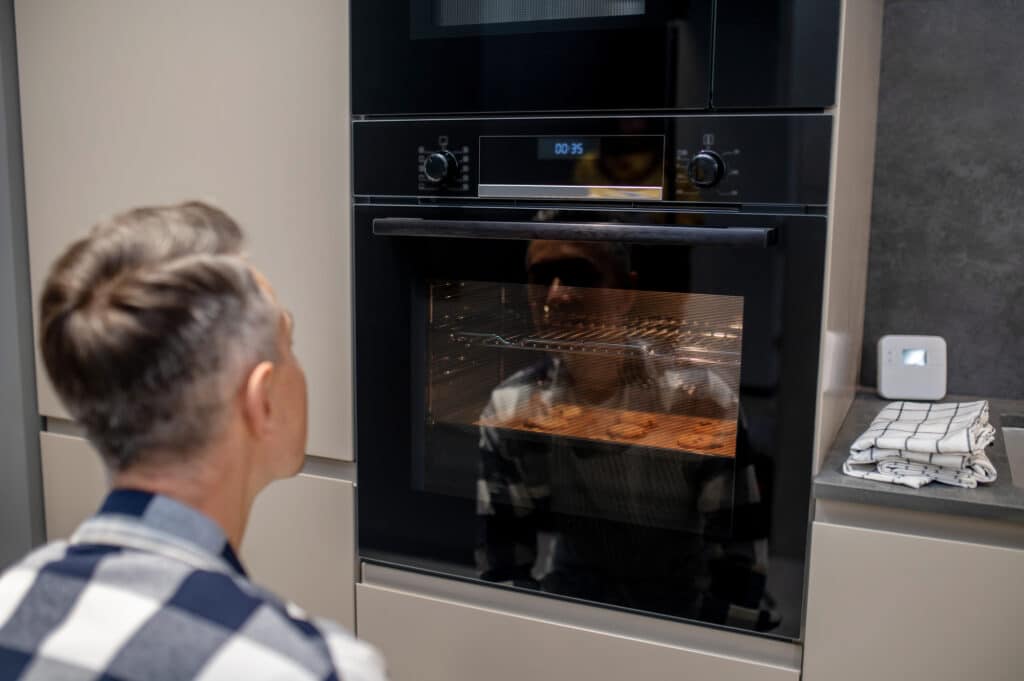
What looks like a single pane of oven glass is actually multiple layers of tempered glass, which is heat treated to be heat resistant and approximately four to five times stronger than regular glass. Ovens use two types of tempered glass for their window, namely borosilicate and float glass, which have low conductivity, keeping their maximum temperature safely moderated. Borosilicate is far more common.
Instead of a single pane of glass like most would assume the oven window to be, oven glass is actually composed of multiple tempered glass sheets. There can be as many as four layers arranged tightly next to each other in the mounting, which is why one can most often continue using your oven one or two panes break. There is still a degree of insulation, thanks to the remaining glass sheet/s.
What Causes Oven Glass To Break
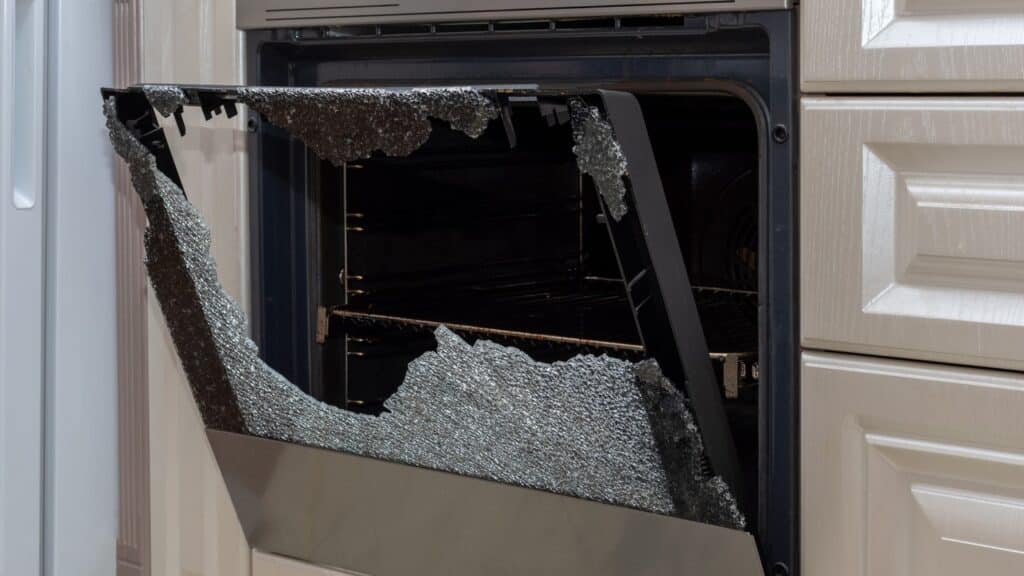
As mentioned, oven glass is tempered glass which means that there are only a couple of things that can cause it to break. Tempered glass also shatters instead of fracturing into dangerous sharp tiny shards. It is this safety aspect, combined with the heat resistance, that makes manufacturers use it. As glass is heated, it begins to expand, and once it cools down, it contracts again. When the glass has lost integrity in some way, these dynamics can cause it to shatter. As for the exact underlying cause of breakage, there are several potential causes, but basically all of them can be pinned to the thermodynamics of glass.
Underlying Manufacturing Fault
The glass could have been hiding a tiny crack already upon its purchase, which fractured under the immense heat of baking, roasting or grilling. Chips around the edge of the glass pane where it fits in the recess of the oven window are a leading cause of shattering other than accidental damage.
Incorrect fitment, whereby the mounting screws are overtightened, is another culprit which eventually causes the cracking or shattering by means of the same type of underlying stress.
Otherwise, there were still trace elements of nickel sulfide present, and in this case, it is a defect that the manufacturer needs to address. While a sporadic occurrence, miniscule nickel sulfide inclusions sometimes remain in the glass from when it was first made. When these impurities form in the tension zone of oven glass, spontaneous breakage can occur.
Blunt Force Physical Damage
Sharp knocks to the oven or oven window, especially while it’s hot, will often damage the integrity of the glass, forming fracturing that’s invisible to the naked eye unless, of course, it’s severe enough or you know exactly what you’re looking for. This is why one must never slam an oven door closed. Aside from the jarring blow to the window, the slam can also warp the door or damage its hinges.
Damage Incurred From Cleaning
The number one risk that one needs to be aware of to prevent oven glass from shattering well before it even becomes a possibility is the condition of the door. An oven needs to remain clean so that rust and consequent weak spots in its metal composition do not develop. With this being said, cleaning the window, door, or rest of the oven too aggressively with a scourer can scratch the surface, causing it or the glass to lose integrity and later break.
Touching The Glass With Cold Apparatus
Be extremely careful when placing large baking dishes into an oven. The contrasting temperature between the cold dish and the oven glass, which reaches as high as 350°F, onsets rapid contraction and can, in turn, form cracks or shatter the glass. Some oven glass windows hit 450°F, which makes an even more volatile situation when touching anything cold.
Warped Oven Door From Prolonged Use Or Prior Damage
Sometimes, the door of very old ovens begins to warp, which consequently contorts the glass unevenly as thermal expansion occurs, causing it to shatter in time. Once an oven door is damaged and begins warping, there’s a good chance that its oven glass will shatter, and when it does, there’s no replacing it. A contorted oven door fitted with a straight pane of tempered glass is going to cause uneven stress and inevitably break again.
What To Do When Oven Glass Breaks
First things first. Don’t panic! Breakage is unlikely to cut or harm you in any way. Once you’ve cleaned up the mess, you can carefully assess the damage and then decide whether or not your oven is still safe to use. If your oven is still usable, the only consideration to keep in mind is the extra radiant heat being pushed out in the immediate area of the oven. You may need to reposition it away from other appliances/kitchen equipment and younger family members and pets to prevent potential damage or harm. Here’s the exact steps to follow in the case of oven glass breakage.
Clean The Shattered Oven Glass
Even though oven glass is tempered and thus shatters into fragments that can’t cut you, this doesn’t mean that cleaning up every last trace is going to be easy. Make sure you get the oven into a bright light so that you can see all the shards and then start by vacuuming or wiping up as many of the pieces as possible using a damp towel. To get rid of the last traces of glass, we recommend wiping the inside of your oven everywhere with a fresh, soft slice of bread or a potato cut in half. Both are extremely effective at wiping up minute shards and glass powder that other means of cleaning just can’t pick up well enough. Glass clings superbly to both surfaces.
Seal The Oven If Necessary
The only time that you should consider sealing an oven is if multiple layers of your oven’s window are broken/shattered, and you know that you’re not going to be able to replace it or the glass for a very long time. Unfortunately, the only good way to temporarily seal a broken oven is by using sheet metal. Yet, temporarily affixing a sheet of metal isn’t the easiest task, to say the least. Only the more technically inclined, DIY-savvy users will be capable of attempting this fix. For everyone else, either use the oven as is (if the door still seals) or wait on a replacement/fix.
Determine How Damaged Your Oven Is
The safest use-case scenario for a broken oven is if the outer glass has broken, but the inner glass is intact. This is due to the inner panes absorbing the most of the heat, therefore providing the majority of the oven’s insulation. An oven with broken inner panes is also usable as long as the rest of the oven is still in good condition (especially the seal and form of the door), but the escaping emanating heat will be higher, and there’s a more substantial chance of the remaining glass breaking through extended, repeated use.
Most of the time, it’ll remain safe to use for short to medium length bouts of baking, grilling or roasting such as the 10 to 12 minutes needed for delicious but quick dishes like our must-try crumb topped oven baked haddock, our tasty speedy oven roasted pecans or the like.
About the only time that an oven is completely unsafe and can’t have its glass replaced is when the door itself has warped and does not seal properly. It was the warping itself that stressed the window in the first place, and the contorted door also translates to immense, dangerous ongoing heat loss. In this case, the entire oven must be replaced.
Replacing The Glass Or Oven
Most manufacturers stock replacement glass for their ovens, so if you purchased yours within the last few years, we suggest contacting customer support or a repair agent to secure a replacement oven window. Keep in mind replacing the glass is only possible if the door is undamaged, and the cost makes it only worthy of consideration by those who own mid-range to high-end ovens. Replacing the oven glass of a cheap oven simply doesn’t warrant the cost.
Customer Support Portals
If your oven glass has suddenly exploded into thousands of blunt fragments or a single pane of the window assembly has broken, cracked, or fractured in any way and you can’t find either a physical cause like a sharp knock or warped door, then we suggest you contact your manufacturer.
Oven glass windows that have been damaged due to a manufacturing fault will typically be replaced free of charge. Those that do not qualify will at least be pointed in the direction of replacement parts or an authorized repair center. Here are support portals for the most popular oven and range manufacturers.
- Bosch
- Cafe Appliances
- Cosmo Appliances
- Empava Appliances
- Frigidaire
- Gasland Chef
- General Electric
- ILVEUSA
- Jenn-Air
- KitchenAid
- LG
- Magic Chef (MCA Corporation)
- Maytag
- Samsung
- Summit Appliance
- Thor Kitchen
- Verona
- Whirlpool
- Z Line Kitchen And Bath
Report The Incident
If your oven suddenly incurred any damage resulting from a manufacturing fault that could have resulted in physical harm or damage to other objects or property, we urge you to report the incident to The United States Consumer Product Safety Commission. SaferProducts.gov allows for the easy reporting of unsafe products in just four simple steps. Without reporting incidents as they happen, fellow citizens are left unaware of potentially hazardous defects which need to be addressed by the manufacturers in question. All too often, this only happens when enough attention is drawn to the issue. Reporting takes nothing more than a minute or two, and all reports are fully confidential.
Frequently Asked Questions – Broken Oven Glass
Still wondering anything about cracked, broken or shattered oven glass? We’ve got all the answers to your frequently asked questions coming up.
A crack in an oven’s glass window doesn’t mean that you need to stop using it right away. Most ovens have multiple layers of glass. If anything other than the entire window assembly is broken instead of one or two panes, it is generally safe to use, at least for a while. Inspect the oven for any warping of the oven door, and if it still seals, you’re good to go. All a crack will result in is heat loss which means that your oven won’t be running as close to its marked temperature as usual.
Almost all oven manufacturers advise against using any oven that’s inside glass has broken, as all the heat will build up and be transferred to the outer pane. With this being said, if there is still an outer layer of glass, there’s still a reasonable degree of insulation which should render your oven safe to use temporarily. We suggest continuing to use it for short to moderate-length baking, grilling, or roasting only but to rather refrain from anything that’ll be going for hours on end, like an overnight roast.
An oven with broken outer glass is better insulated than an oven with broken inner glass. Even though the majority of manufacturers advise against it, an oven without its outer glass is still safe to use until a replacement is procured. Again, try not to run the oven at a high temperature for multiple hours on end. An hour or two of baking, grilling, or roasting is safe, but six to twelve hours of roasting or dehydrating may cause the remaining glass to crack, break or shatter.
The average freestanding stovetop or combo oven weighs anything between 120 to 330 pounds, while a wall-mounted oven generally weighs between 75 to 130 pounds. At around $0.10 per pound, depending on the quality of the stainless steel in question, you’re looking at approximately $12 to $33 at the least for scrapped freestanding ovens, and $7.50 to $13 for wall mounted ovens.

